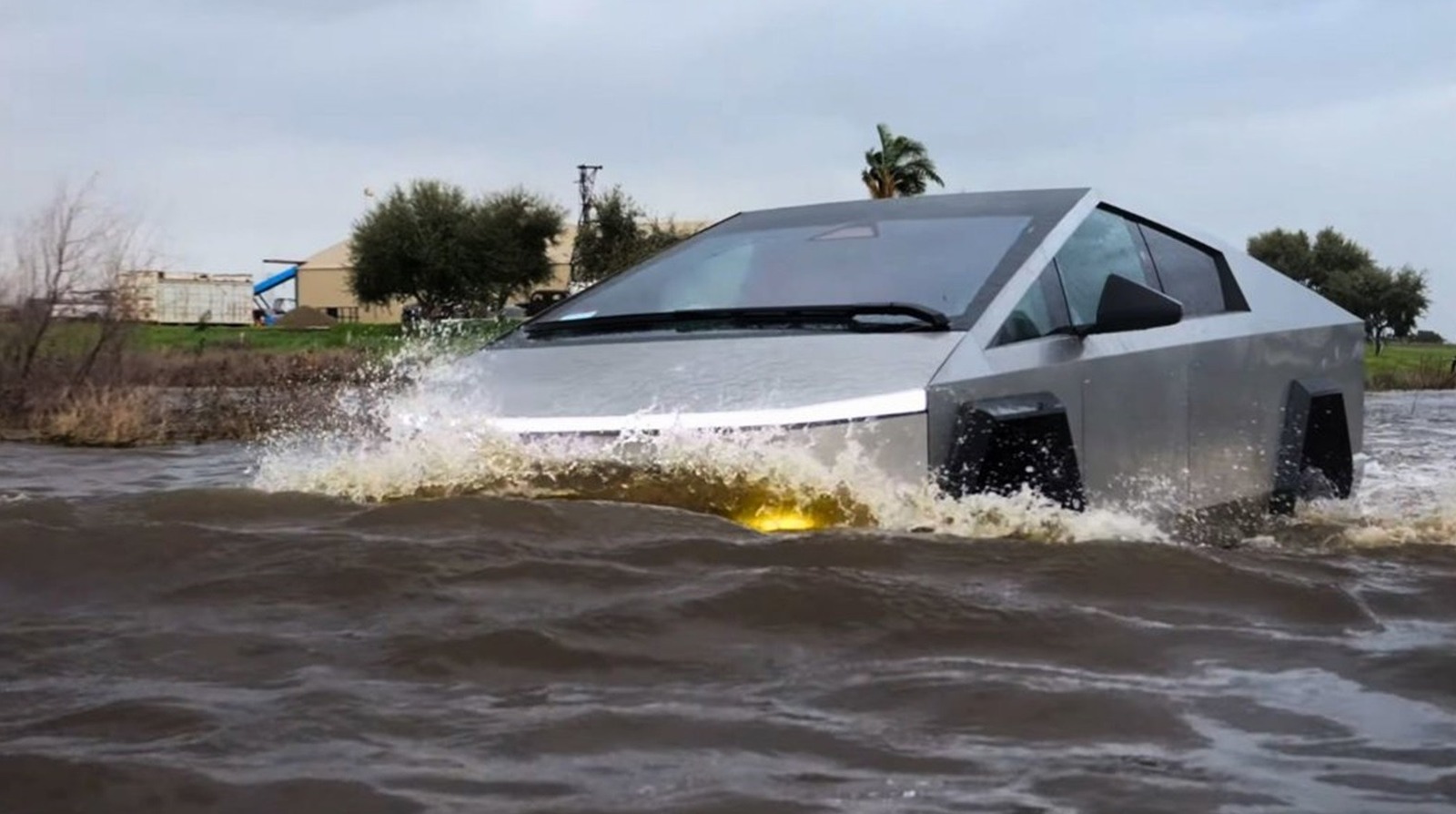
The weather has been quite unpredictable in recent history, and social media has been filled with heartbreaking videos of car owners saying goodbye to vehicles as they're loaded onto the back of flatbeds after getting flooded. Others shared videos of their extensive plans to protect their cars from hurricanes and floods using plastic wrap. It's no secret that cars and water don't mix, and that's become a bigger topic of discussion as more unpredictable weather continues to plague roads — and even garages.
One type of vehicle that's made headlines during natural disasters more than others is the electric car. Being electric, are EVs even more susceptible to water damage than gas-powered ones? And is it dangerous for the driver to be inside of one during heavy rainfall? The simple answer is that you probably should avoid driving your electric vehicle through flood water, but the reasons why it's dangerous are universal to most kinds of cars. Both electric or engine-powered cars are not meant to drive through flood water, especially if it's moving.
In fact, the National Weather Service says that half of the deaths during floods involve vehicles. For electric vehicles specifically, flood water can not only veer you off course or lead to drowning, but can damage the battery beyond repair. EVs are designed to be safe against a normal amount of water exposure but driving through flood water can lead to a lot of bad scenarios, some fatal.
Battery packs are often sealed to keep them waterproof, but if water still gets in, the battery will short circuit and eventually fail. Sometimes, short-circuiting can even cause a fire. Two electric vehicles caught on fire during Hurricane Idalia in 2023.
After major fires in Palm Harbor, Florida, occurred during Idalia and again during Hurricane Helene in 2024, Pinelles County's Emergency Management Director Cathie Perkins said during a public briefing, "Anything with those lithium-ion batteries needs to be moved out of the surge zones where it could be exposed to saltwater. We've seen it — they've exploded; they've caused fires. If it's inside of your home or underneath a condo, we do not need to have building fires in the middle of this because nobody's going to be able to come out and help you.
" Being exposed to flood water can also cause mechanical damage , interior damage, and all the other issues that any car — electric or not — will run into when submerged in water. So you probably don't want to drive your EV through flood water. If you have, you'll want to get the car checked to ensure it's still safe to drive.
AA advises against driving through flood water that's at least four inches deep as a general rule for all vehicles. This wading depth is when the water can begin to damage your vehicle or cause you to lose control. Every electric car manufacturer has its own wading depth that you should check as well, a height they claim is safe for that specific car (though that doesn't mean drivers should try to test it out).
Tesla has a maximum wading depth of 32 inches from the bottom of the tire — the Cybertruck claims 32.5 inches. The Nissan Leaf was tested to have a wading depth of up to 27.
5 inches. The Audi Q8 has its wading depth listed as 11.8 inches.
The Ford F-150 Lightning can wade into water up to 24 inches. All of these vehicles' wading depth varies depending on their ground clearance and mechanical components. Their wading depth can change if they are modified, especially if their suspension is lowered.
It's probably best not to push a car's wading depth to its limits since flood water can not only damage your EV, currents can push your vehicle off the road, or you could end up completely submerged. While manufacturers may have tested cars in various situations, the safest decision is to avoid flood water that's flowing and over four inches deep..














